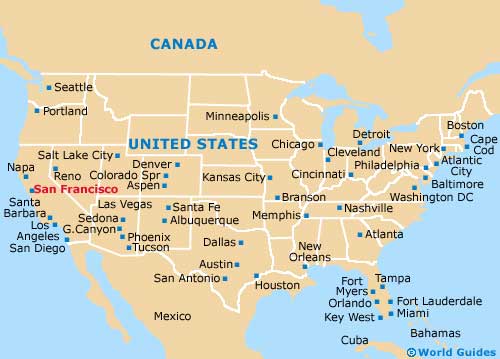1. THE NEW URBAN SCENE People
from farms all over the United States were moving to cities because that’s
where all the new work was. Life in these booming cities was far different from
the slow-paced, everybody-knows-your-business type of life in America's smaller,
rural towns. Chicago, for instance, was an industrial powerhouse, home to
native-born whites and African Americans, immigrant Polish, Irish, Russians,
Italians, Swedes, Arabs, French, and Chinese. Each day, an estimated 300,000
workers, 150,000 cars and buses, and 20,000 trolleys filled the vibrant
downtown. At night people crowded into incredible-looking movie theaters and vaudeville houses offering live variety
shows.
2. For
small-town migrants, adapting to the city demanded changes in thinking as well
as in everyday living. The city was a world of competition and constant change.
City dwellers read and argued about current scientific and social ideas. They
judged one another by accomplishment more often than by someone’s background.
City dwellers also tolerated drinking, gambling, and casual dating and sex—behaviors
considered shocking and sinful in small towns.
For
all its color and challenge, the city could be impersonal and scary. Streets
were filled with strangers, not friends and neighbors. Life was fast-paced, not
leisurely. The city demanded endurance.
Science and Religion
Clash Another
bitter controversy highlighted the growing rift between traditional and modern
ideas during the 1920s. This battle raged between fundamentalist religious groups and secular (non-religious, separate from religion) thinkers over the
validity of certain scientific discoveries.
AMERICAN
FUNDAMENTALISM The Protestant movement grounded in a
literal (word-for-word) interpretation of the Bible was known as fundamentalism. Fundamentalists were
skeptical of scientific knowledge; they argued that all important knowledge
could be found in the Bible. They believed that the Bible was inspired by God,
and that therefore its stories in all their details were true.
Their beliefs led fundamentalists to reject
the theory of evolution advanced by
Charles Darwin in the 19th century—a theory stating that plant and animal
species had developed and changed over millions of years. The claim they found
most unbelievable was that humans had evolved from apes. They pointed instead
to the Bible's account of creation, in which God made the world and all its
life forms, including humans, in six days.
THE SCOPES TRIAL In March 1925, Tennessee passed the
nation's first law that made it a crime to teach evolution. Immediately, the
American Civil Liberties Union (ACLU, is a group of attorneys that protect free
speech rights) promised to defend any teacher who would challenge the law. John
T. Scopes, a young biology teacher in Dayton, Tennessee, accepted the
challenge. In his biology class, Scopes read this passage from Civic Biology:
“We have now learned that animal forms may be arranged so as to begin with the
simple one-celled forms and culminate with a group which includes man himself.”
Scopes was promptly arrested, and his trial was set for July.
The
ACLU hired Clarence Darrow, the most famous trial lawyer of the day, to defend
Scopes. William Jennings Bryan, three-time Democratic candidate for president
and a devout fundamentalist, served as a special prosecutor. There was no real
question of guilt or innocence: Scopes was honest about his action. The Scopes trial was a fight over evolution
and the role of science and religion in public schools and in American
society.
This
clash over evolution, the Prohibition experiment, and the emerging urban scene
all were evidence of the changes and conflicts occurring during the 1920s.
During that period, women also experienced conflict as they redefined their
roles and pursued new lifestyles.
THE FLAPPER During the twenties, a new ideal emerged for
some women: the flapper, a young woman who embraced freedom and the new
fashions and urban attitudes of the day. Tight-fitting felt hats, bright waist-less
dresses an inch above the knees, skin-toned silk stockings, sleek pumps, and
strings of beads replaced the dark and prim ankle-length dresses, whalebone
corsets, and petticoats of Victorian days. Young women clipped their long hair
into boyish bobs and dyed it jet black.
Many
young women became more assertive. In their quest for equal status with men,
some began smoking cigarettes, drinking in public, and talking openly about
sex—actions that would have ruined their reputations not many years before.
They danced the fox trot, camel walk, tango, Charleston, and shimmy with
abandon.
Attitudes toward marriage changed as well.
Many middle-class men and women began to view marriage as more of an equal
partnership, although both agreed that housework and child-rearing remained a
woman's job.
THE DOUBLE STANDARD Magazines, newspapers, and advertisements
promoted the image of the flapper, and young people openly discussed dating and
relationships in ways that scandalized their elders. Although many young women
donned the new fashions and disregarded tradition, the flapper was more an
image of rebellious youth than a widespread reality; it did not reflect the
attitudes and values of many young people. During the 1920s, morals loosened
only so far. Traditionalists in churches and schools protested the new casual
dances and women's acceptance of smoking and drinking.
In the years before World War I, when men
“courted” women, they pursued only women they intended to marry. In the 1920s,
however, casual dating became increasingly accepted. Even so, a double standard —a set of principles
granting greater sexual freedom to men than to women—required women to observe
stricter standards of behavior than men did. As a result, many women were
pulled back and forth between the old standards and the new.
LINDBERGH'S FLIGHT America's most beloved hero of the time
wasn't an athlete but a small-town pilot named Charles A. Lindbergh, who made the first nonstop solo flight across
the Atlantic. A handsome, modest man from Minnesota, Lindbergh decided to go
after a $25,000 prize offered for the first
nonstop solo transatlantic flight. On May 20, 1927, he took off near New
York City in the Spirit of St. Louis. After 33 hours and 29 minutes, Lindbergh
set down at Le Bourget airfield outside of Paris, France, amid beacons,
searchlights, and mobs of enthusiastic people.
Paris threw a huge party. On his return to
the U.S., New York showered Lindbergh with ticker tape, the president received
him at the White House, and America made him its idol. In an age of
sensationalism, excess, and crime, Lindbergh stood for the honesty and bravery
the nation seemed to have lost.
The Harlem
Renaissance Flowers in New York
Many African Americans who migrated north moved to Harlem, a neighborhood on the
Upper West Side of New York's Manhattan Island. In the 1920s, Harlem became the
world's largest black urban community, with residents from the South, the West
Indies, Cuba, Puerto Rico, and Haiti. James Weldon Johnson described Harlem as
the capital of black America.
Like
many other urban neighborhoods, Harlem suffered from overcrowding,
unemployment, and poverty. But its problems in the 1920s were eclipsed by a
flowering of creativity called the Harlem Renaissance,
a literary and artistic movement celebrating African-American culture.
AFRICAN AMERICANS AND JAZZ Jazz was born in the early 20th century in
New Orleans, where musicians blended instrumental ragtime and vocal blues into
an exuberant new sound. In 1918, Joe “King” Oliver and his Creole Jazz Band
traveled north to Chicago, carrying jazz with them. In 1922, a young trumpet
player named Louis Armstrong joined
Oliver's group, which became known as the Creole Jazz Band. His talent rocketed
him to stardom in the jazz world.







